Azure Data Studio is a graphical tool for managing databases.
It is available on Windows, MacOS, and Linux. On Linux it’s available on Red Hat (RHEL), SUSE Linux Enterprise Server, and Ubuntu.
Below is a step-by-step guide to installing Azure Data Studio on Ubuntu 18.04 via the GUI. Screenshots included.
I’ve also provided the commands for installation via the command-line in case you prefer that method.
Download Azure Data Studio
You can download the latest Azure Data Studio release from the Microsoft website.
I used Firefox in this example.
Go to the Microsoft Download page, look for the Linux options:
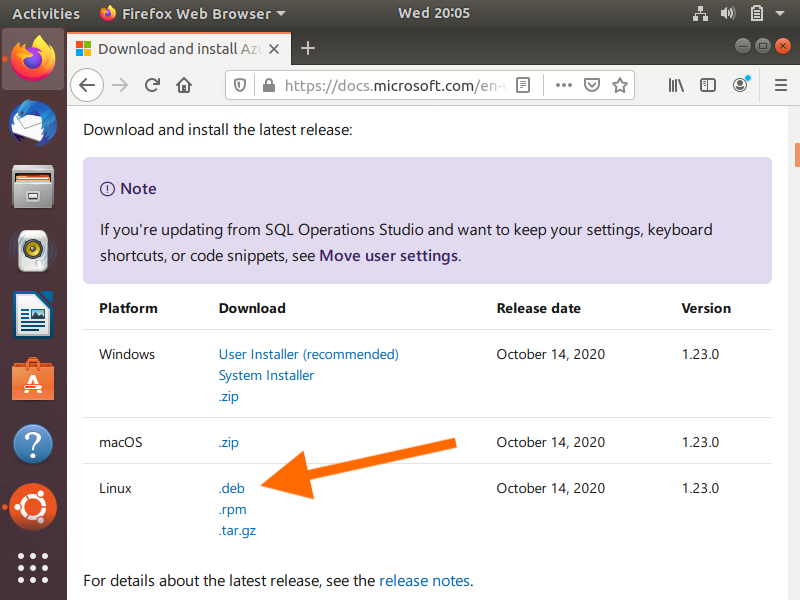
Click the .deb option.
You’ll be prompted to either save the file or open it:
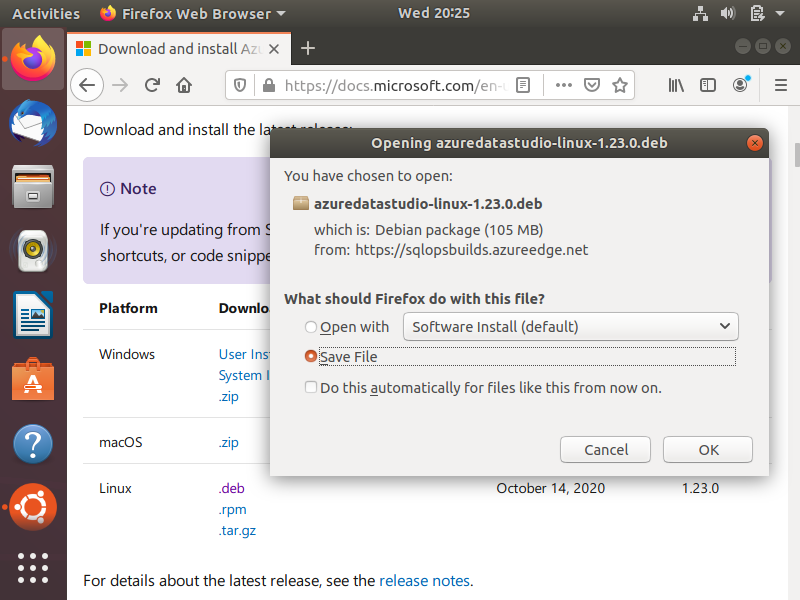
Select the Save File option, then click OK.
This will download the file to your computer.
Once downloaded you should see the file listed:

Click on the file.
Install Azure Data Studio
After clicking the above file, the following screen is displayed:
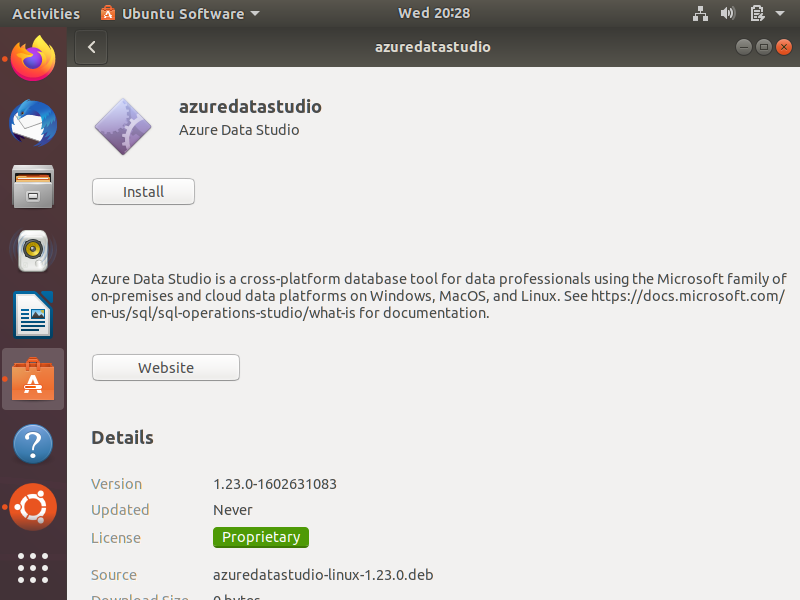
Click Install.
You may be prompted to authenticate:
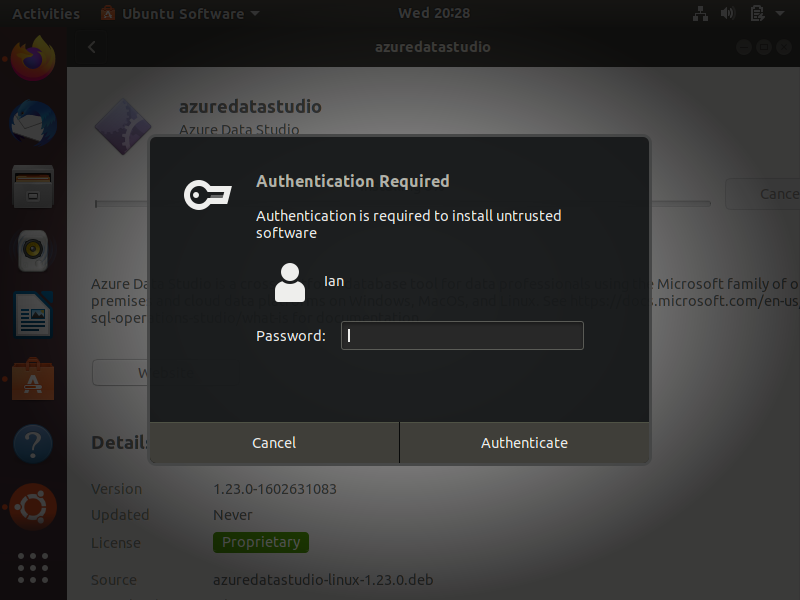
Enter your password as required.
This installation process now begins:
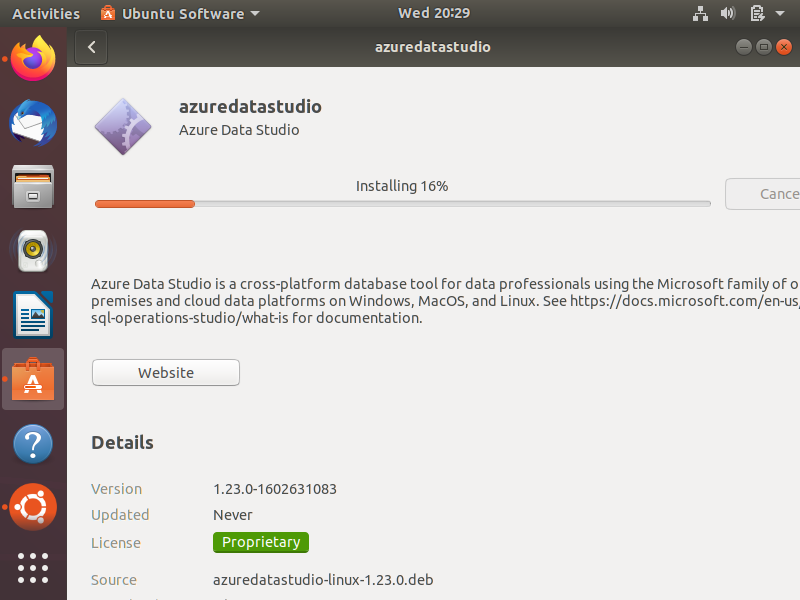
It shouldn’t take too long.
Once installed, the Install button will change to Remove:
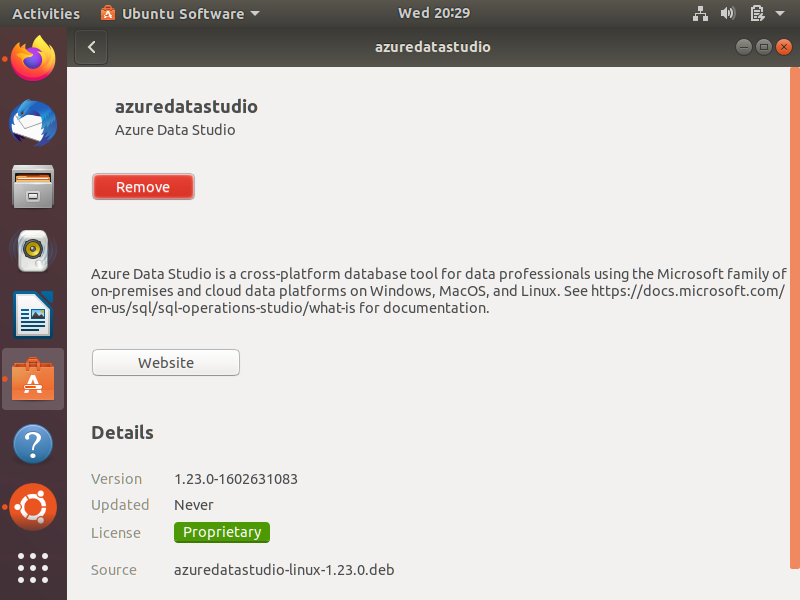
This means that Azure Data Studio has been successfully installed!
Open Azure Data Studio
You can find Azure Data Studio amongst your Applications by clicking on the Show Applications icon – the nine dotted square at the bottom left of the screen:
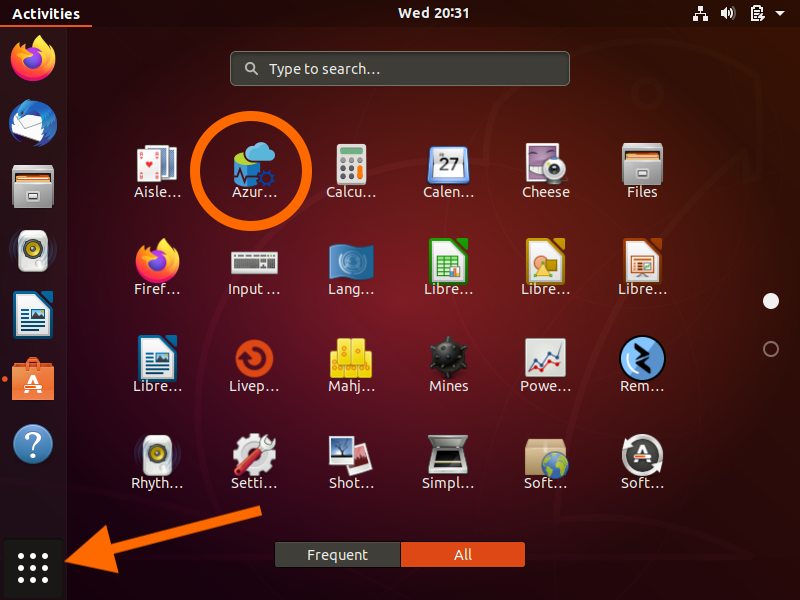
You can also filter the applications by searching for azure:
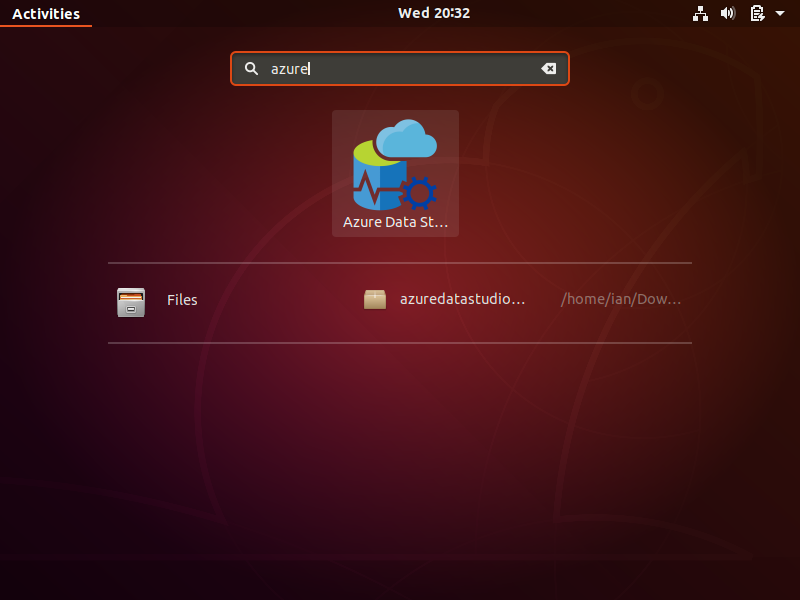
Clicking on the Azure Data Studio icon will launch it:
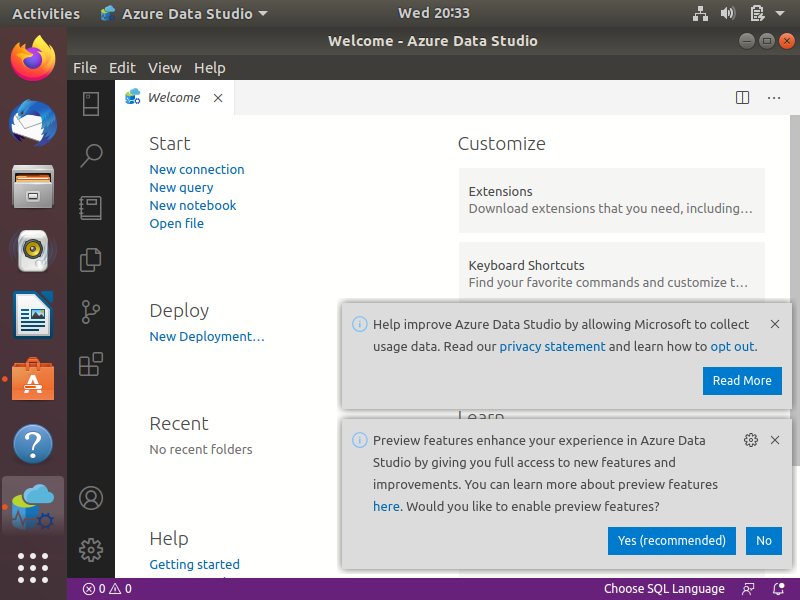
To start using it, click New connection under the Start heading near the top left.
You will be prompted to set up a new connection:
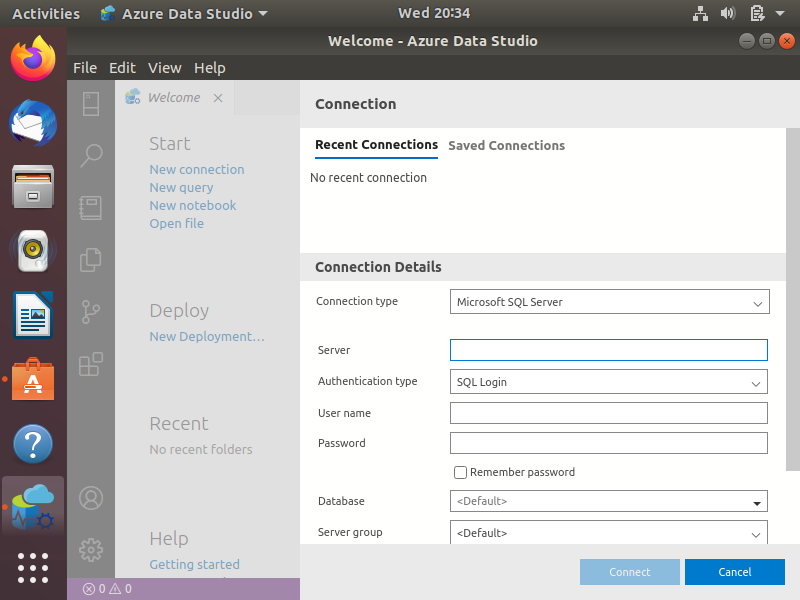
Enter the server, user name, and password.
The following screenshot shows me logging in to my local SQL Server instance. In that case, I used localhost as the server name. I used the sa account to log in with:
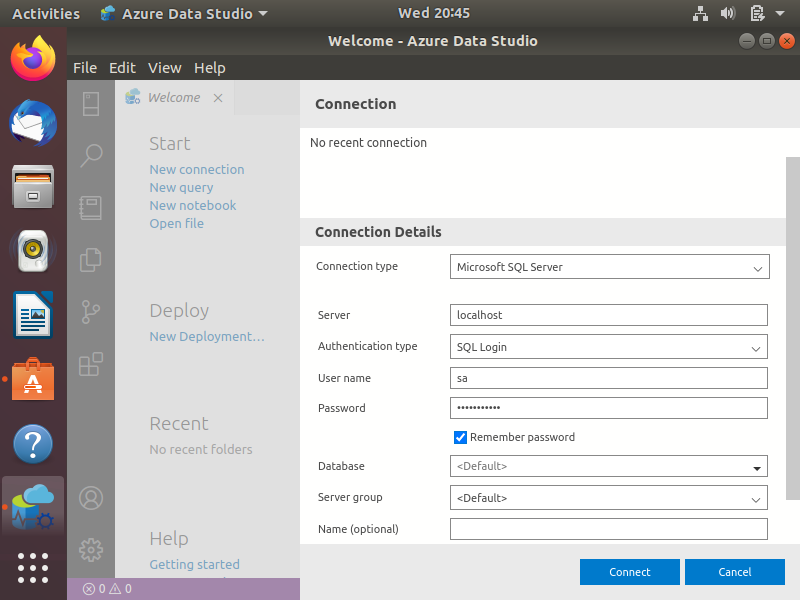
Once you entered your details, click Connect.
This should open the connection:
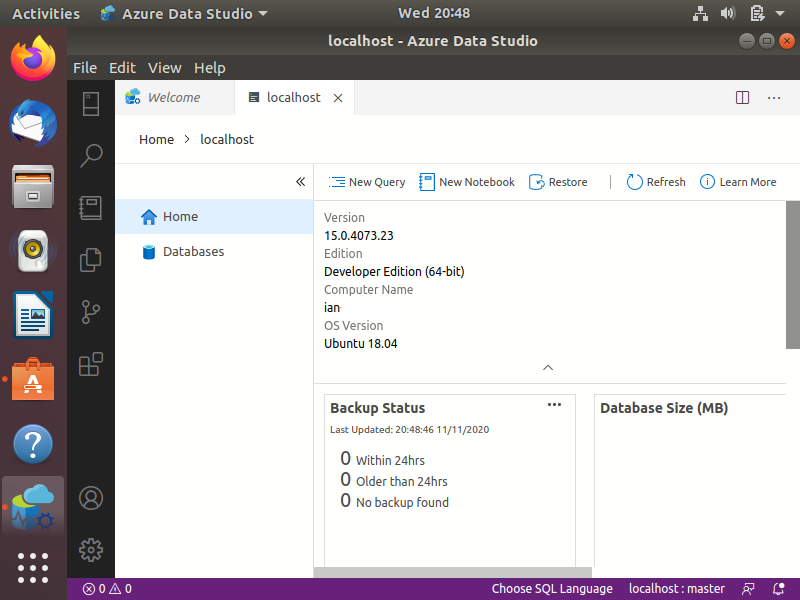
You can now go ahead and create databases, run queries, etc
Click the New Query button to open a new query tab.
You can also click the Connections icon near the top left of the screen to reveal all the connections. This allows you to navigate the servers, databases, objects, etc.
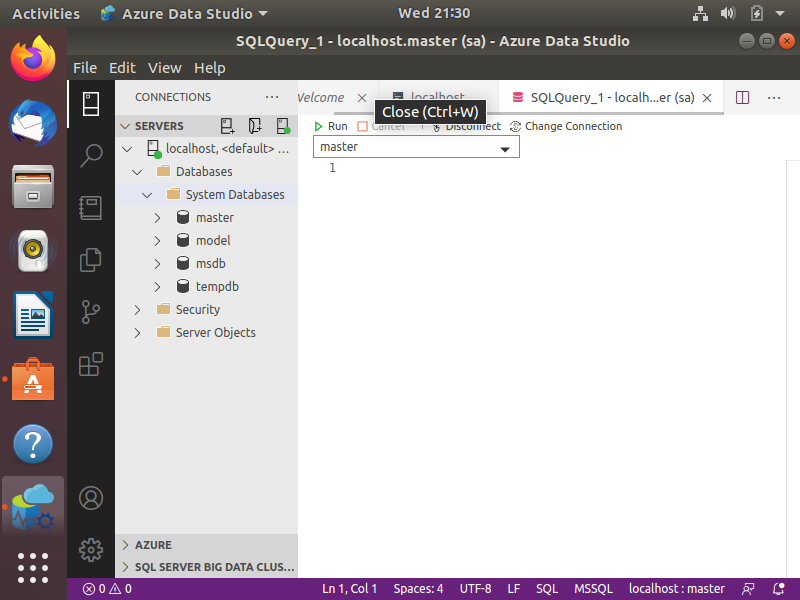
Command-Line Installation
If you prefer to do things by the command-line, you can install Azure Data Studio by opening Terminal, and entering the following:
cd ~
sudo dpkg -i ./Downloads/azuredatastudio-linux-1.24.0.debReplace 1.24.0 with the version that you’re installing. You can see this in the name of the .deb file.
Note that this still requires that you’ve downloaded the .deb file from the Microsoft website as mentioned above.
You can now launch Azure Data Studio with the following command:
azuredatastudioDepending on your setup, it’s possible that you may have missing dependencies. If so, running the following should sort this out:
sudo apt-get install libxss1
sudo apt-get install libgconf-2-4
sudo apt-get install libunwind8Can I Install it on a Different Machine to My Database Server?
Yes. And in most cases, you probably should install Azure Data Studio on a different machine to the database Server.
In the above example, I installed Azure Data Studio on to the same machine that SQL Server is running on, then used localhost to connect. You probably won’t want to do this in your production environment.
Either way, the instructions are the same regardless of whether you have SQL Server on the same machine or not. You can (and typically should) install Azure Data Studio on one machine, and then connect to the database server on another machine.